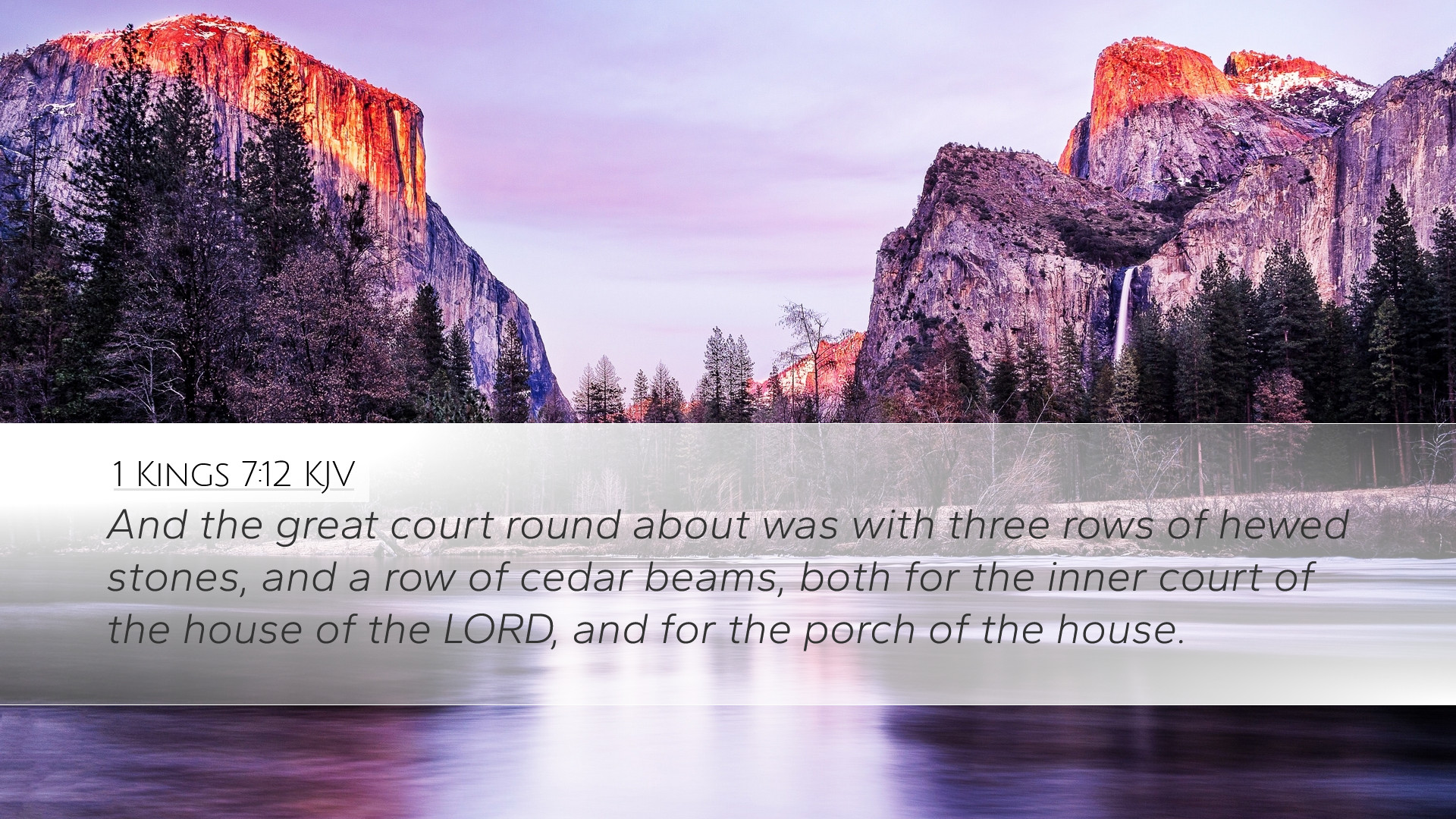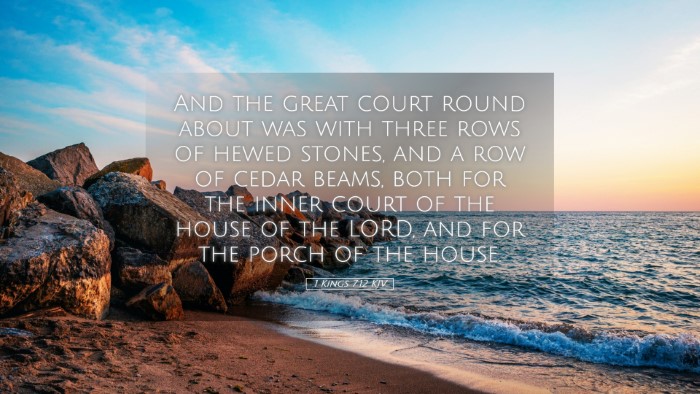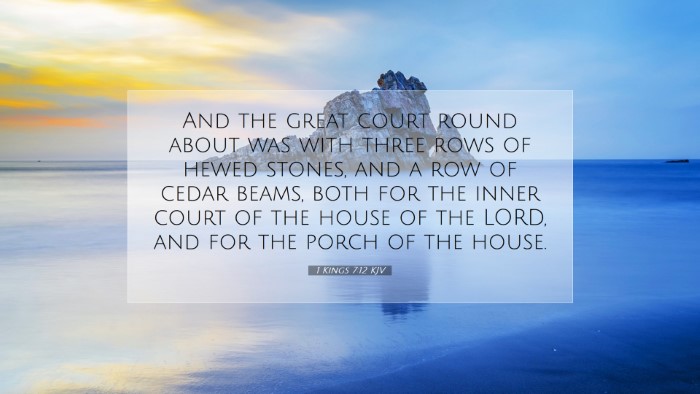Commentary on 1 Kings 7:12
1 Kings 7:12 reads: "And the great court round about was with three rows of hewed stones, and a row of cedar beams, and as the inner court of the house of the Lord, and the porch of the house."
Introduction
This passage serves as an architectural description of the great court of Solomon's temple, highlighting its grandeur and beauty. The insights extracted from the commentaries of Matthew Henry, Albert Barnes, and Adam Clarke provide a deeper understanding of the verse's significance within the broader narrative of Israel's worship and God's habitation among His people.
Architectural Significance
The physical details presented in this verse bear immense theological and ceremonial weight. The description of “three rows of hewed stones” signifies not only stability and permanence but also the intention of creating a genuinely royal presence for the worship of God.
- Matthew Henry:
Henry emphasizes the meticulous craftsmanship involved in the temple's construction, reflecting God's glory. He notes that the rows of hewn stones speak to the foundational integrity of the structure, paralleling the spiritual foundation of the worship of Israel.
- Albert Barnes:
Barnes elaborates on the aesthetic dimensions of the temple, interpreting the use of cedar as a symbol of nobility. The cedar beams’ luxurious essence compared to the rough stone highlights the contrast between nature and human artistry in promoting divine beauty.
- Adam Clarke:
Clarke notes the symbolism of the three rows: they may represent completeness and perfection, suggesting that God’s dwelling is meant to be the pinnacle of spiritual importance and grandeur. The layout encourages believers to perceive God's majesty and holiness.
Theological Implications
Beyond the mere physical structure, the description of the court evokes several theological truths.
- The Presence of God:
The temple serves as a signifier of God’s presence among His people. The construction of the great court is an invitation to the Israelites to commune with God, which underscores God's desire for relationship.
- Holiness and Reverence:
The careful design and construction methods communicated the need for purity and reverence in worship. The precision in design also reflects God’s orderliness and foreshadows the need for holiness among His people.
- Preparation for Worship:
The grandeur of the court prepared the way for worship, encouraging a sense of awe and reverence. This idea speaks to the modern church and its physical environment, urging leaders and congregants alike to consider how space affects worship.
Reflection for Modern Believers
As pastors, students, theologians, and scholars reflect on this verse, several applications emerge.
- Constructing Spaces for Worship:
Learning from the detailed architecture depicted, contemporary worship leaders should be intentional about the spaces they create for spiritual engagement, ensuring that they promote an atmosphere conducive to encountering God.
- Holiness in Worship:
Henry, Barnes, and Clarke remind us that worship needs intentionality and reverence. Modern practices should foster a deeper understanding of God's holiness and inspire congregations to pursue sanctity in their lives.
- Communal Worship Experience:
The temple was not merely an individualistic endeavor; it provided a communal space for Israel to gather. In a modern context, churches should cultivate community and encourage collective engagement in worship.
Conclusion
1 Kings 7:12, while a detailed architectural note, resonates with deeper theological meanings and implications for the faith community's contemporary worship. Through the lenses of renowned biblical commentators, this verse challenges us to view our spaces, encounters, and lives through the lens of reverence, intentionality, and the majesty of God's presence.


